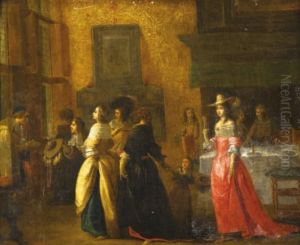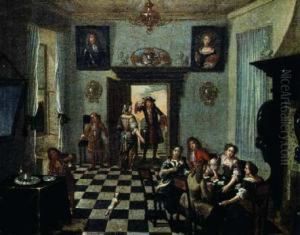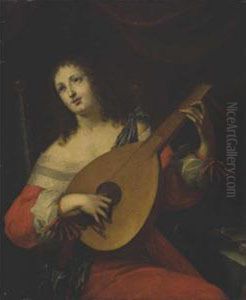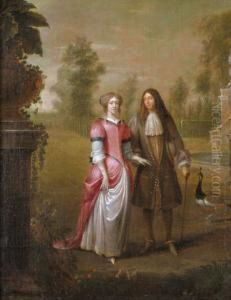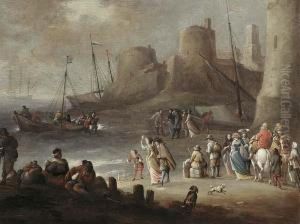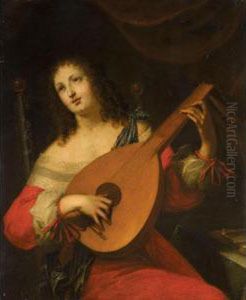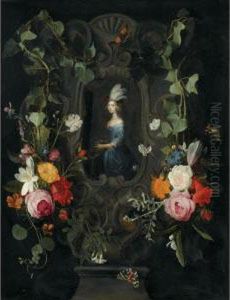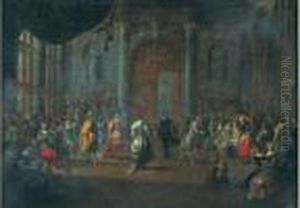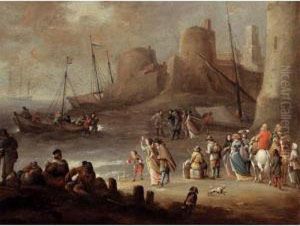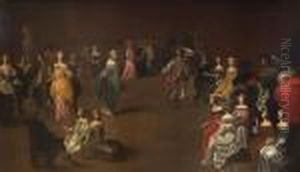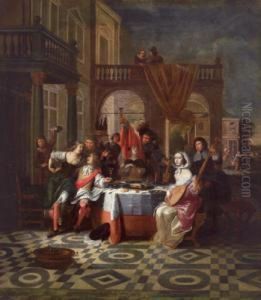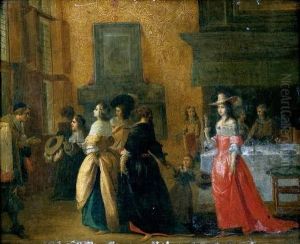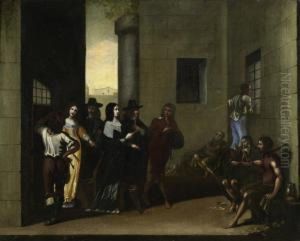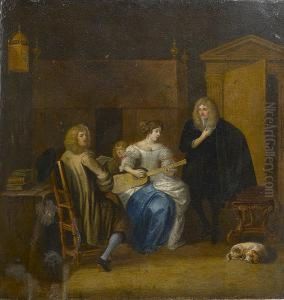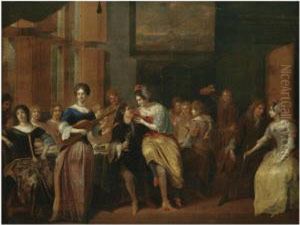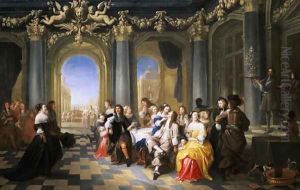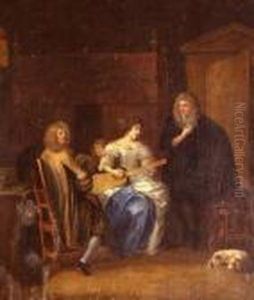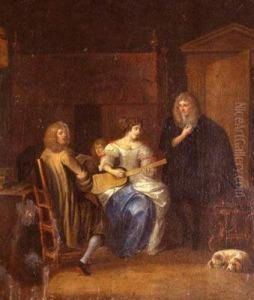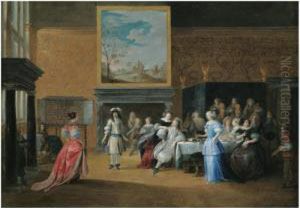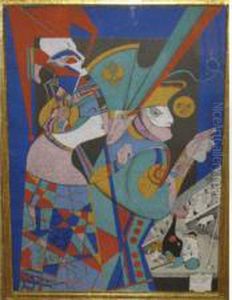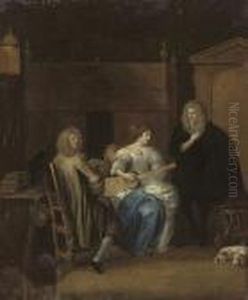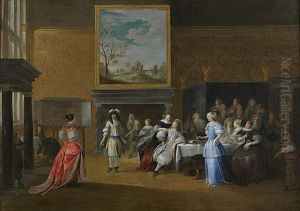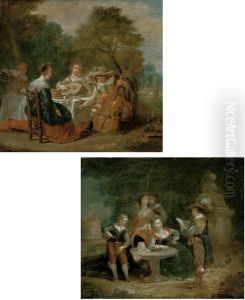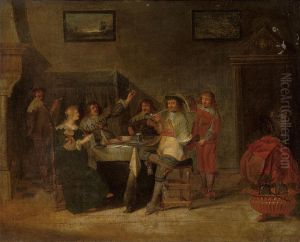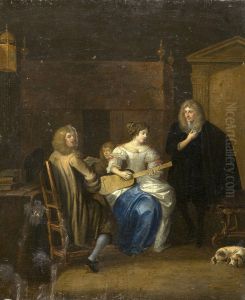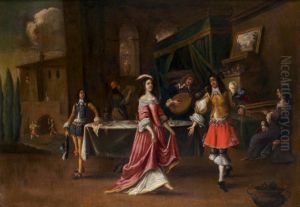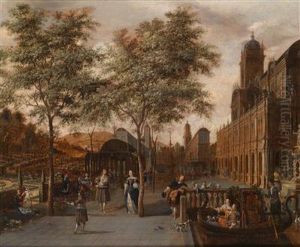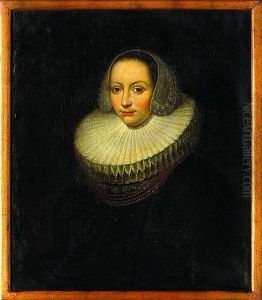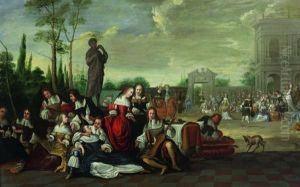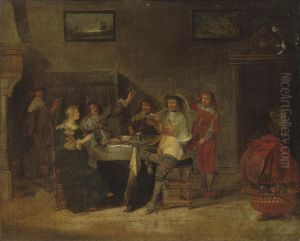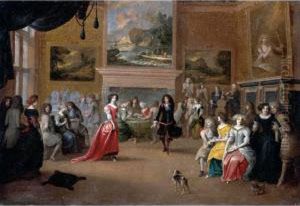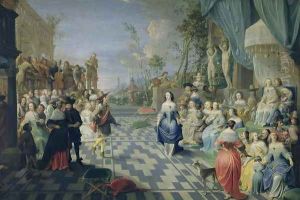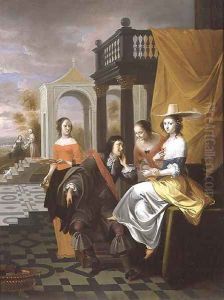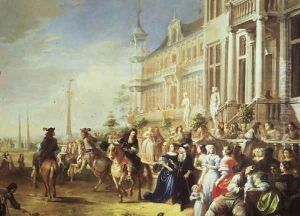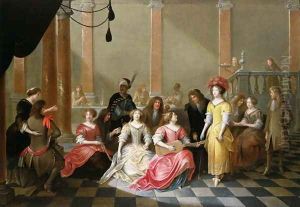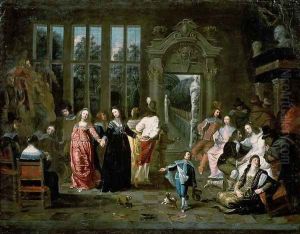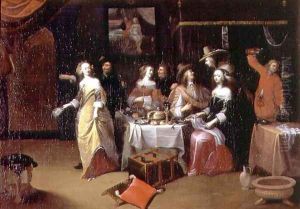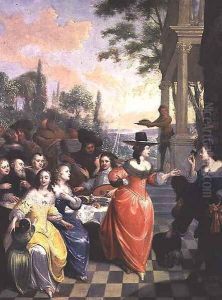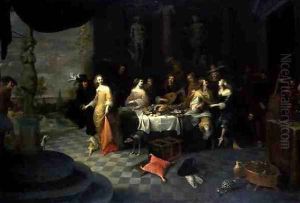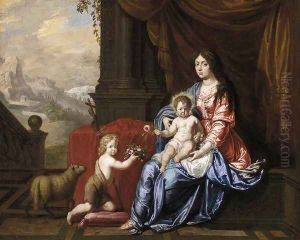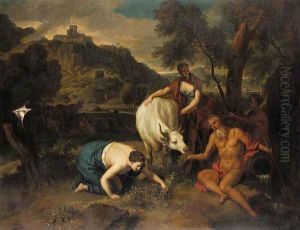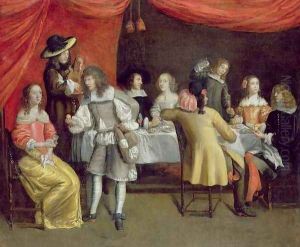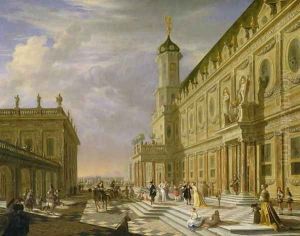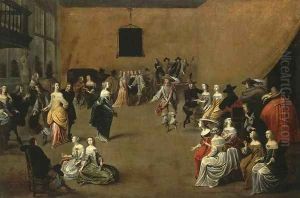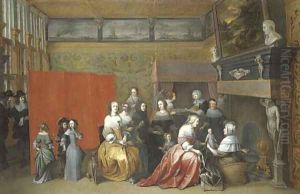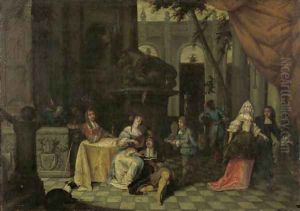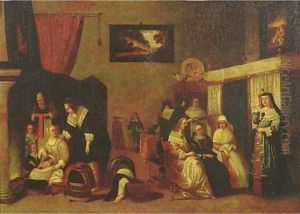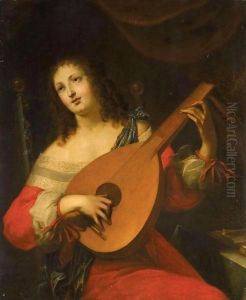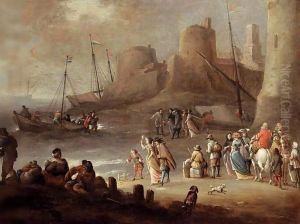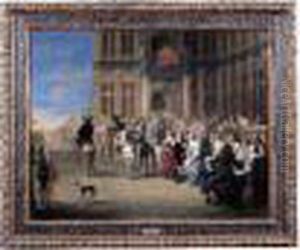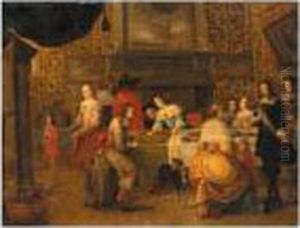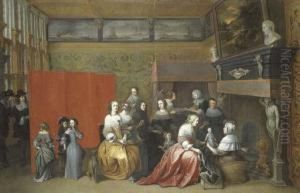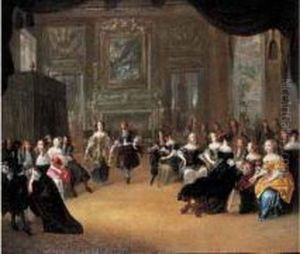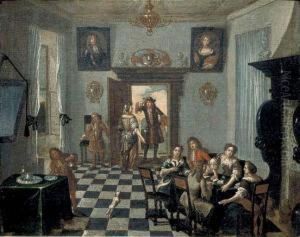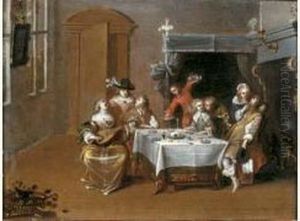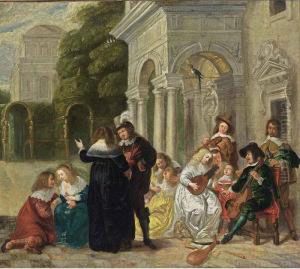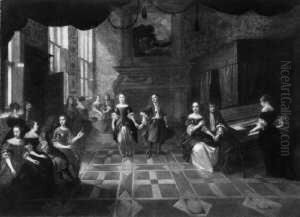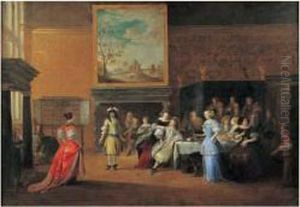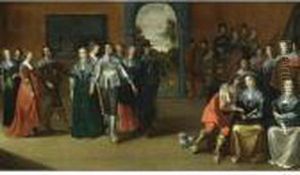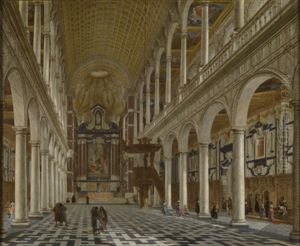Hieronymus Janssens Paintings
Hieronymus Janssens, also known as Hieronymus Janssens the Dancer or 'den danser', was a Flemish Baroque painter who specialized in elegant interior scenes and was a part of the Antwerp school. Born in Antwerp in 1624, Janssens’ work was emblematic of the joyful and carefree atmosphere of the High Baroque period. He was a contemporary of other notable Flemish artists such as David Teniers the Younger and was influenced by the works of both Italian and Flemish predecessors.
Janssens' paintings typically depicted gallant company scenes, balls, concerts, and theatrical performances, often set in luxurious interiors of the era. The figures in his works are usually seen engaging in dance, a pastime that was becoming increasingly fashionable among the European elite at the time. This fascination with dance is what earned him the nickname 'den danser'. His brushwork is noted for its finesse and the lightness of touch, which perfectly captured the ephemeral moments of the society he portrayed.
Throughout his career, Janssens contributed to the development of the 'fête galante' genre, which depicted aristocratic gatherings in pastoral settings and would later be associated with artists like Antoine Watteau. Janssens was also known for his collaboration with other artists, where he would often paint the figures while others would contribute landscapes or architectural elements to the piece.
Despite his success as an artist, there is not an abundance of personal details about Janssens' life. He was admitted as a master in the Guild of Saint Luke in Antwerp in 1644. His works were sought after by patrons during his lifetime, and his influence extended to other artists who emulated his style. Janssens continued to work and live in Antwerp until his death in 1693. Today, his paintings can be found in several museums and art collections worldwide, and they continue to be studied for their representation of 17th-century leisure and elegance.
